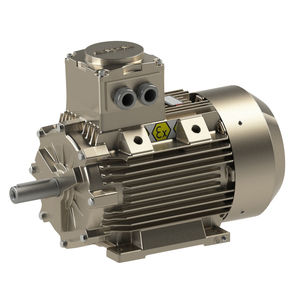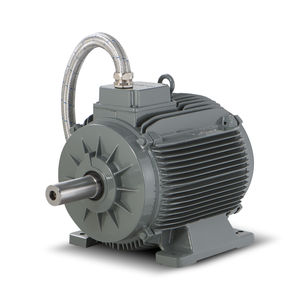
- Power Transmission - Mechanical components
- Motor and Motor Control
- AC motor
- Gamak Makine Sanayi A.Ş.
Crusher motor ACasynchronous400 V

Add to favorites
Compare this product
Characteristics
- AC/DC
- AC
- Type
- asynchronous
- Voltage
- 400 V, 380 V, 690 V
- Protection class
- IP65
- Configuration
- cast iron, squirrel cage, squirrel-cage rotor, cast iron frame, TEFC
- Efficiency classes
- IE2, IE3
- Number of poles
- 4-pole, 6-pole
- Cooling mechanism
- air-cooled, forced air-cooled, air-cooled
- Applications
- for the mining industry, for crusher
- Other characteristics
- low-voltage
- Power
Max.: 355 kW
(482.666 hp)Min.: 132 kW
(179.47 hp)- Torque
Max.: 2,019 Nm
(1,489.138 ft.lb)Min.: 846 Nm
(623.9776 ft.lb)- Rotational speed
Max.: 1,500 rpm
(9,424.78 rad.min-1)Min.: 1,000 rpm
(6,283.19 rad.min-1)- Diameter
Max.: 100 mm
(3.94 in)100 mm
(3.94 in)Min.: 100 mm
(3.94 in)- Operating temperature
Max.: 40 °C
(104 °F)Min.: -35 °C
(-31 °F)
Description
Gamak crusher motors are designed to withstand the heavy operating conditions required by the industry from 132 kW to 355 kW in 315 and 355 types. Crusher motors designed in fixed base cast iron bodies can also be supplied attachable feet housings in 315 types with HT code structure upon request.
IP65 protection, which is especially needed in extremely dusty environments, is provided with a special seal and bearing design. Standard features include lubricated NU bearing used in the pulley shaft output, Class H insulation, shaft design with increased resistance to excessive fatigue and torsion (shaft diameter 100 millimeters), impact and drop resistant cast iron body structure, thermistor protection. Thanks to its electrical design suitable for working with the driver, it also responds to speed control needs. The following are the basic application areas for the motor:
• Stone Crushing
• Feeders and Feeder Conveyors
• Crushers
• Sieves
• Demolishers
• Vibration
Catalogs
Technical Catalog
79 Pages
Related Searches
*Prices are pre-tax. They exclude delivery charges and customs duties and do not include additional charges for installation or activation options. Prices are indicative only and may vary by country, with changes to the cost of raw materials and exchange rates.






